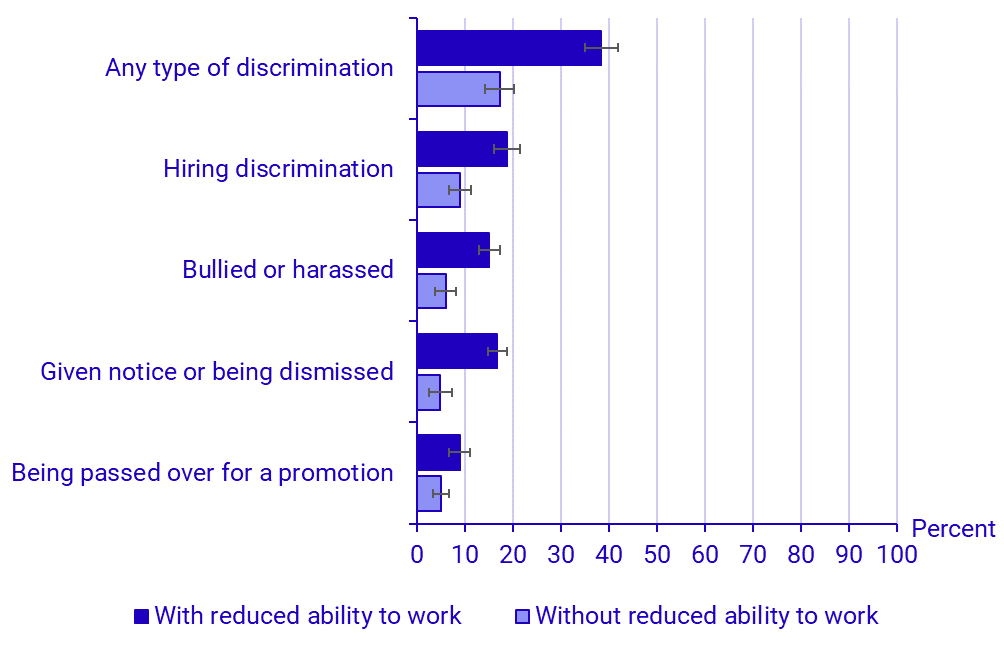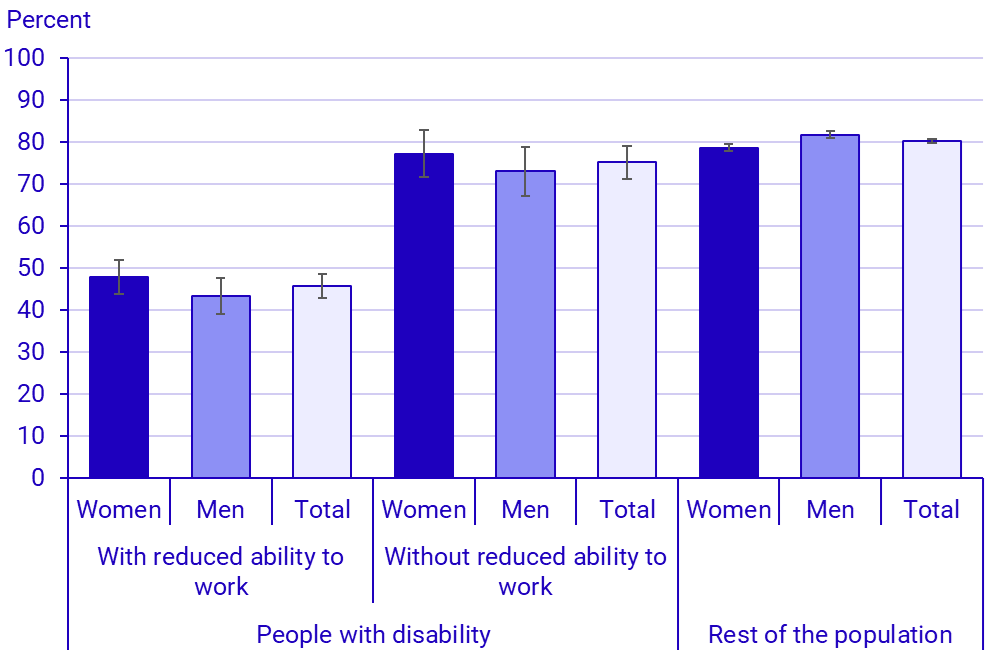The labour market situation for people with disability 2024
One out of three has been subjected to discrimination
Statistical news from Statistics Sweden 2025-04-28 8.00
In the population aged 16–65, approximately 778 000 people have a disability, which corresponds to about 12 percent. Just over 8 percent have a disability that reduces their ability to work. Labour force participation is lower among people with disability than in the rest of the population, 65 percent compared to 88 percent.
Among people with disability, 33 percent have at some point been subjected to discrimination or offensive treatment in their working life. People whose disability reduces their ability to work are more exposed to discrimination and offensive treatment than those without reduced ability to work. Twice as many with reduced ability to work have experienced some form of discrimination. The most common form of discrimination is not getting a job one applied to and was adequately qualified for. However, being given notice or dismissed, and being subjected to bullying or harassment is also common.

The proportion estimates in the chart are associated with some uncertainty. The margins of error refer to 95% confidence intervals around the point estimate.
The employment rate is lower for people with disability
In year 2024, just over 5 million people in the population aged 16-65 were employed. Of these, approximately 414 000 had a disability. People with disability are underrepresented among the employed. The employment rate among people with disability is 53 percent, compared to 80 percent in the rest of the population. The employment rate is even lower among people with reduced ability to work, 46 percent. Among people without reduced ability to work the proportion of employed is 75 percent, which is on par with the rest of the population.

More common for people with disability to work part-time
Among employed people with disability, a lower proportion work full-time compared to the rest of the employed population, 62 percent compared to 83 percent. The proportion is even lower among people with reduced ability to work, 55 percent, while among those without reduced ability to work, it is 74 percent.
– The proportion of women working full-time is lower than that of men, both among people with disability and in the rest of the population. Among people with disability, 52 percent of women work full-time, compared to 75 percent of men. In the rest of the population, the difference is not quite as large – 77 percent of women work full-time, compared to 88 percent of men, says Marc Doppelbauer, analyst at Statistics Sweden.

Definitions and explanations
The government has tasked Statistics Sweden (SCB) with conducting a survey on the labour market situation for people with disability. It is carried out directly after Statistic Sweden’s Labour Force Surveys (LFS).
The survey covers people aged 16–65 who are registered in Sweden and live in private households. The survey is conducted by asking a question about disability directly after the LFS. People who indicate that they have a disability are asked whether their disability reduces their ability to work. They are also asked four questions about discrimination in their working life.
The question asked to identify the group of people with disability is as follows: "Do you have any disability? This can be, for example, a physical, psychological, cognitive, intellectual, or neuropsychiatric disability."
The results for employment and unemployment in the total population presented in this report differ from the official LFS statistics since the sample for this survey is limited to the age group 16-65 and the estimation procedure is different from the LFS.
Publication
Feel free to use the facts from this statistical news but remember to state Source: Statistics Sweden.
